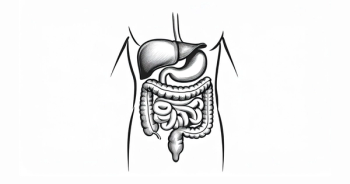
Fruquintinib Combo Active in HER2– Gastric/GEJ Cancer
Fruquintinib with chemotherapy and PD-1 blockade showed promising efficacy in HER2-negative advanced gastric or gastroesophageal junction adenocarcinoma.
The combination of fruquintinib (Fruzaqla), chemotherapy, and PD-1 blockade demonstrated encouraging efficacy and manageable safety in the frontline treatment of patients with HER2-negative advanced gastric or gastroesophageal junction (GEJ) adenocarcinoma. These phase 2 results from the FDZL-FIX trial (NCT06158919), presented in a poster session at the
At the January 24, 2025, data cutoff, the median progression-free survival (PFS) in the intention-to-treat population (n = 33) was 9.43 months (95% CI, 5.29-13.24). The 9-month PFS rate was 57% (95% CI, 40.0%-83.0%).
“Fruquintinib is a highly selective inhibitor of VEGFR1/2/3,” Chechen Wang, MD, of the Department of Medical Oncology at Fudan University Shanghai Cancer Center in China, and colleagues wrote in the poster. “We sought to explore the efficacy and safety of fruquintinib combined with PD-1 inhibitors and chemotherapy [for] the first-line treatment of [patients with] HER2-negative advanced gastric/GEJ adenocarcinoma.”
The study authors noted that chemotherapy combined with immunotherapy, specifically PD-1 inhibitors, is a new standard of care for the frontline treatment of patients with advanced gastric cancer. However, patient outcomes remain poor, underscoring the need for new combination approaches in this population.
Analyzing the Study Design and Baseline Characteristics
The single-arm, open-label, single-center study enrolled patients with confirmed locally advanced unresectable or metastatic gastric/GEJ adenocarcinoma. In order to be eligible for the trial, patients needed to be at least 18 years old, have received no prior systemic antitumor therapy, have an ECOG performance status of 0 or 1, and have at least 1 measurable lesion per RECIST 1.1 criteria. Patients were also required to have HER2-negative disease.
All patients received 4 mg of oral fruquintinib daily on days 1 through 14, then once every 3 weeks subsequently. Patients were also treated with 200 mg of sintilimab (Tyvyt) or 360 mg of nivolumab (Opdivo) once every 3 weeks, as well as chemotherapy with SOX (S-1 and oxaliplatin) or XELOX (oxaliplatin and capecitabine) on days 1 through 14 every 3 weeks for 6 cycles.
Patients received maintenance fruquintinib via the same dosing schedule used in the combination therapy portion of the trial. They also were treated with maintenance chemotherapy with 40 mg/m2 of oral S-1 twice daily on day 1 through approximately day 14 every 3 weeks or 1000 mg/m2 of oral capecitabine administered via the same dosing schedule. Treatment continued until disease progression or intolerable toxicity.
At baseline, the median age was 62 years (range, 35-77). Most patients were less than 65 years old (51.5%), male (66.7%), and had an ECOG performance status of 1 (97.0%).
The primary end point was PFS. Secondary end points included overall response rate (ORR), disease control rate (DCR), overall survival, and safety.
Additional Efficacy Findings and Safety Data
Response-evaluable patients (n = 30) achieved an ORR of 80.0% (95% CI, 61.4%-92.3%); all responses were partial. Notably, the DCR was 100% (95% CI, 88.4%-100.0%) as all 6 patients who did not respond experienced stable disease.
In terms of safety, the most common any-grade treatment-emergent adverse effects (TEAEs) included decreased neutrophil count (33.3%), palmar-plantar erythrodysesthesia syndrome (33.3%), and fatigue (30.3%). Grade 3 or higher TEAEs consisted of decreased neutrophil count (9.1%), decreased platelet count (6.1%), and decreased white blood cell count (3.0%).
“[These] results warrant further investigation in a large cohort,” the study authors wrote in their conclusion.









































